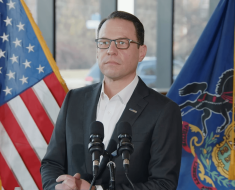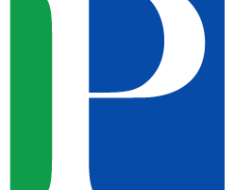YouTube has offered a sneak peek at new AI music capabilities it has been developing in partnership with Google’s DeepMind and its new Lyria large language model (LLM). These experiments include an AI-generated soundtrack feature for YouTube Shorts and AI music creation tools and were built with the support and collaboration of several famous singers and musical artists.
YouTube AI Music
“The development of AI technology is rapidly changing the way we navigate the landscape and I believe as artists we need to be a part of shaping what that future looks like,” Demi Lovato said in a statement. “My career has been about pushing boundaries of and creating the most interesting music for my fans. I am open minded and hopeful that this experiment with Google and YouTube will be a positive and enlightening experience.”
The first project is a YouTube Shorts experiment called Dream Track that lets a small group of creators generate custom 30-second soundtracks for their videos featuring the AI-simulated voices of participating artists. Users simply type a prompt and select an artist from the options. YouTube said DeepMind’s Lyria music model powers the feature. The company positioned Dream Track as an initial step toward exploring how AI could foster deeper connections between artists and fans. The other project created the new Music AI Tools, which involve music generation from text and sound. They’re designed to allow songwriters and producers to quickly turn ideas into music through humming melodies or using natural language prompts. For example, users could ask to convert a pop song into a reggaeton style.
“The emergence of AI has brought music to the cusp of a new creative era. As a myriad of companies map out their AI approach, we want ours to be defined by partnership and responsibility. That’s why we developed a set of AI Music principles and a Music AI incubator published earlier this year that are rooted in responsible collaboration. Since then, we’ve been exploring the possibilities of how AI can empower creativity alongside artists, songwriters, producers and our partners while also identifying its challenges,” explained Lyor Cohen and Toni Reid, Global Head of Music, YouTube and Vice President, Emerging Experiences & Community Products in a blog post. “Combined, these experiments explore the potential of AI features to help artists and creators stretch their imaginations and augment their creative processes.”
YouTube said these collaborative experiments with artists help it responsibly develop AI’s creative potential for the music community. They offer early testing as YouTube forms principles and guidelines for music AI adoption. The company acknowledged AI’s opportunities come with complex challenges around copyright, attribution, and responsible governance. It pledged to work closely with industry partners to explore frameworks ensuring artists benefit equitably from AI integration. For now, the platform is taking measured steps, collaborating with artists, creators and Google’s own DeepMind to explore possibilities. And there are quite a few notable people in the music world involved.
“Being a part of YouTube’s Dream Track experiment is an opportunity to help shape possibilities for the future,” John Legend said in a statement. “As an artist, I am happy to have a seat at the table and I look forward to seeing what the creators dream up during this period.”
Generative AI Songs
There’s been a big rush toward developing ways of creating AI-generated music and combatting those like anonymous music creator Ghostwriter, who have had many viral hits mimicking artists. After sending many notices of copyright infringement to streaming services over viral hits like those produced by Ghostwriter, Universal Music Group (UMG) has begun working on a long-term solution by partnering with Google to craft a licensing agreement for songs, which may factor into the new projects.
This is far from YouTube’s only generative AI project, including the recent release of experiments with AI-produced summaries of comments and a conversational AI assistant to answer questions about a video and its content. That followed the release of a synthetic image and video generator for YouTube Shorts videos called Dream Screen, along with analytics and inspiration for video ideas within YouTube Studio and a new mobile app called YouTube Create that comes with AI-assisted video creation and editing tools. And YouTube also started offering a text-to-image tool for creating custom playlist album covers just last month.
YouTube’s partners aren’t the only artists interested in the space. Music producer and artist Timbaland shared a sample of a song featuring a deepfake voice of the Notorious BIG before pausing work on it after some backlash from fans of the deceased rapper. Others are testing the deepfake waters more publicly, as when French DJ and music producer David Guetta created and played an AI-written and performed Eminem song at some of his recent shows, calling it “Emin-AI-em.” Meanwhile, musical artist Grimes has gone so far as to offer 50% of the royalties on any AI-generated song that uses her voice. Holly Herndon outright offers a free synthetic version of her voice to make music with called Holly+, and the musical group YACHT trained an AI model to write an entire album called “Chain Tripping.”
The pursuit of text-to-music synthetic media generators is one of the facets pursued by several generative AI developers. Most notably, Meta recently created a generative AI music and sound model named AudioCraft that can transform a text prompt into any kind of sound by melding Meta’s text-to-music model MusicGen and text-to-natural-sound tool AudioGen, enhanced by EnCodec, a decoder that compresses the training required for the AI models to work. Meanwhile, Google’s MusicLM generative AI music composer has only been glimpsed in a few demonstrations as it is supposedly too good to be released without concern about copyright infringement.
Follow @voicebotai Follow @erichschwartz
Google and Universal Music Group Pursue Potential Deepfake Song Licensing Deal: Report


